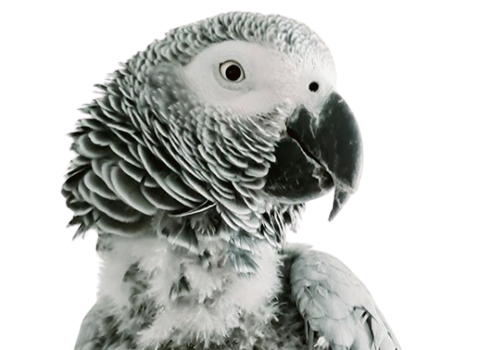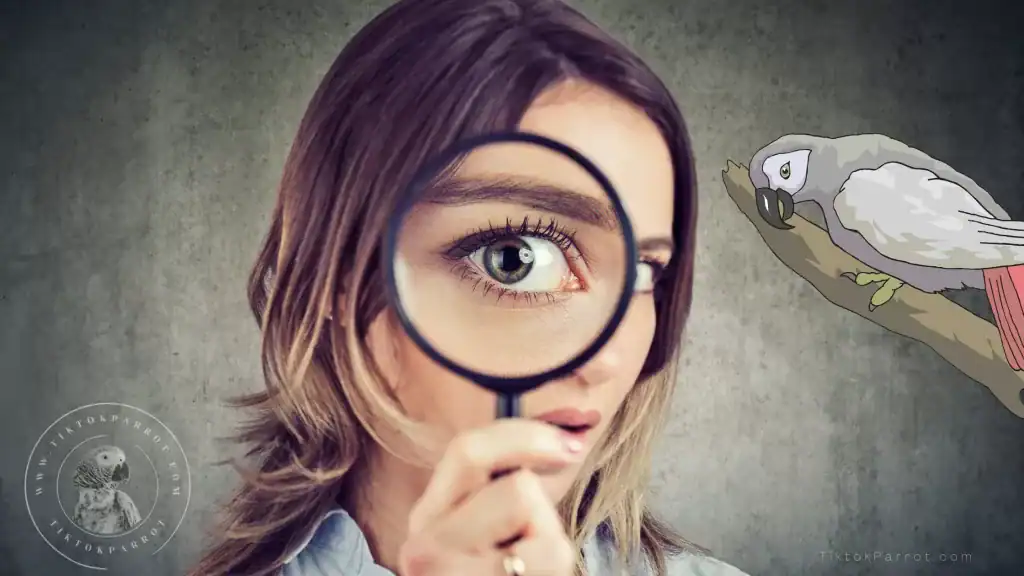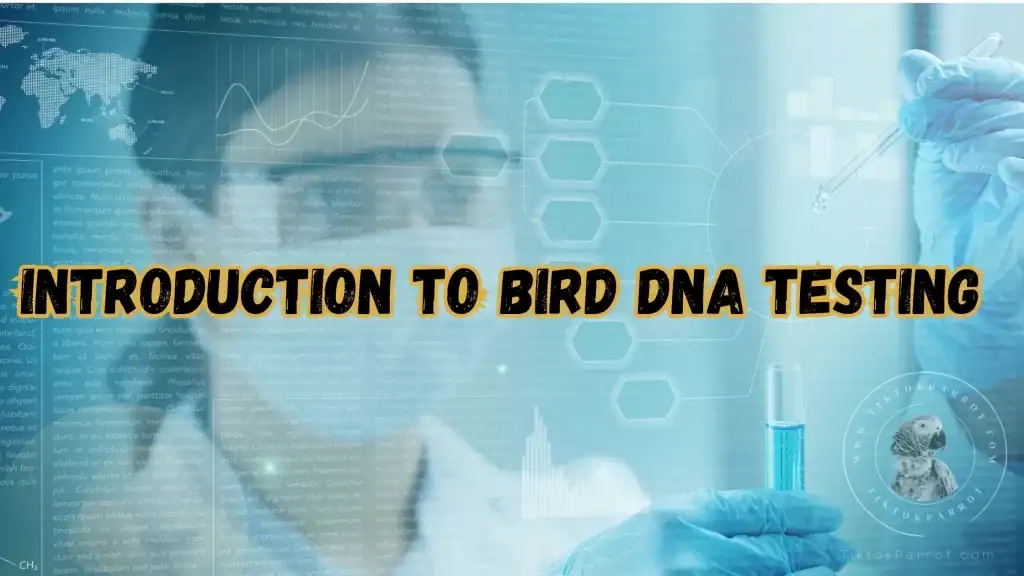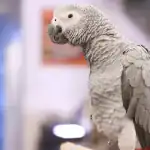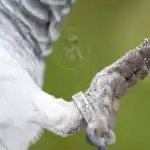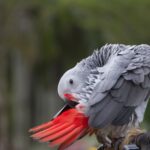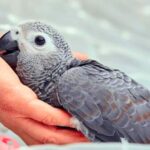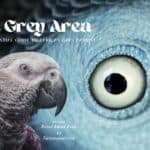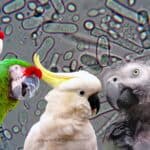Have you ever gazed into your bird’s cage, admiring their beautiful plumage, and wondered, “How do I know if my bird is male or female?”
You’re not alone! Many bird owners are in the same boat, curious to understand their feathery friend’s gender. Determining your bird’s sex can be a bit of a challenge, but fret not!
This article will take you under its wing and guide you through the process. So buckle up, and let’s embark on this fascinating journey!
A Colorful World of Differences: Physical Characteristics
With a little patience and a keen eye, you’ll soon be able to confidently determine whether your avian companion is a mister or a miss, allowing you to better understand and care for your beloved bird.
a. Feathering the Nest: Coloration
One telltale sign of your bird’s gender is the color of its feathers. In many species, males are decked out in more vibrant hues, while females sport more muted tones. For instance, male parakeets often have a brighter cere (the area above the beak) than their female counterparts.
b. Size Matters: Body Size and Shape
In some bird species, males and females can be distinguished by their size and shape. Males are typically larger and more robust, whereas females are more petite. However, this isn’t a hard-and-fast rule, so be cautious when relying solely on size differences!
c. Beak-a-boo! Head and Beak Differences
Sometimes, male and female birds can be distinguished by the shape and size of their heads and beaks. For example, male cockatiels have a more prominent crest and a bigger, more curved beak than females.
Vocal Cues: Can You Hear the Difference?
a. Singing the Blues: Male Birds’ Songs
Another way to identify your bird’s gender is to listen to their songs. Males are generally more vocal and have more elaborate songs to woo their mates. Female birds are often more demure and less vocal in comparison.
b. Hush, Little Birdy: Female Birds’ Vocalizations
Females might be less vocal, but they do have their own distinctive sounds. They may chirp or emit short, quiet calls that are unique to their gender. Pay close attention to your bird’s vocalizations to help you identify their sex.
Personality Traits: Do Males and Females Act Differently?
a. Boys Will Be Boys: Male Behavior
Male birds often exhibit more assertive and territorial behavior. They might puff up their feathers, strut, or spread their wings to assert dominance or attract a mate.
b. Ladylike Charm: Female Behavior
Female birds, on the other hand, may be more reserved and nurturing. They often display nesting behavior, such as collecting materials or arranging their environment to create a cozy spot for potential offspring. Female birds may also be more gentle and calm compared to their male counterparts.
Gender, Species, And Disease Identification
One of the most common challenges that pet bird enthusiasts encounter is identifying the sex of their feathered companions. This is primarily due to the fact that numerous popular avian species lack sexual dimorphism, which means that there are no easily discernible physical characteristics to differentiate males from females.
In several instances, both sexes appear virtually identical, making it difficult to determine their gender and then this is when DNA test comes into consideration.
Introduction to Bird DNA Testing
DNA testing in birds has become an invaluable tool for avian enthusiasts, breeders, researchers, and conservationists. It provides insights into the birds’ gender, species, and possible diseases, helping in their proper management and care.
In this section, we’ll discuss the importance of bird DNA testing, various testing methods, and the benefits of these techniques.
What is DNA Testing for Birds?
DNA testing offers a reliable and accurate method to determine a bird’s gender. This scientific approach examines the genetic material of the bird, providing conclusive results regarding its sex.
How DNA Testing for Birds Works?
To carry out a DNA test, a sample of the bird’s feathers, blood, or eggshell is collected and sent to a specialized laboratory for analysis. The lab then examines the sample for specific genetic markers that indicate the bird’s sex.
Importance & Benefits Of Bird DNA Testing
Gender Determination
Birds can be difficult to sex visually due to their similar appearance or because some species are monomorphic. DNA testing offers a reliable way to determine a bird’s gender, which is essential for breeding purposes, understanding behavior, and providing appropriate care.
Species Identification
Identifying bird species can be challenging, especially for rare or endangered species. DNA testing allows for accurate species identification, which is crucial for conservation efforts, habitat management, and ensuring the correct classification of specimens.
For example, budgerigars, or budgies, are a prime example of a pet bird species whose gender can be easily identified in adults but might prove challenging in younger birds. As most birds are chosen by prospective owners or breeders before reaching sexual maturity, this creates a conundrum when deciding which bird to buy.
Apart from budgies, there are many other bird species that present similar difficulties in gender identification. Understanding the specific characteristics of each species is crucial for bird enthusiasts to determine their pet’s sex accurately.
Disease Detection
Certain diseases can have devastating effects on bird populations. DNA testing can detect the presence of specific pathogens or genetic markers associated with diseases, allowing for early intervention and treatment to prevent outbreaks and maintain healthy populations.
Accurate Results
DNA testing offers a high level of accuracy compared to traditional methods, such as visual examination or behavioral observations. This is particularly important for determining a bird’s gender, identifying species, and detecting diseases, where misidentification or delayed detection can have serious consequences.
Non-Invasive Testing
Many DNA testing methods, such as PCR and DNA barcoding, can be performed using non-invasive samples, like feathers or eggshells. This reduces stress on the birds and eliminates the need for invasive procedures or anesthesia.
Early Disease Detection
By identifying pathogens or genetic markers associated with diseases, DNA testing can detect potential health issues before they become symptomatic. This allows for early intervention and treatment to prevent outbreaks and maintain healthy bird populations.
Conservation Efforts
Accurate species identification through DNA testing plays a vital role in conservation efforts. It helps monitor biodiversity, track population trends, and inform habitat management decisions. By identifying rare or endangered species, researchers can prioritize conservation actions and develop targeted strategies to protect these vulnerable populations.
DNA Testing Methods
There are several DNA testing methods used in birds for various purposes such as species identification, parentage testing, sex determination, and population genetics. Some of the most common methods include:
Polymerase Chain Reaction (PCR)
PCR is a widely used technique that amplifies specific DNA sequences, making it easier to analyze and detect target genes or pathogens. It’s particularly useful for gender determination and disease detection, providing rapid and accurate results.
DNA Barcoding
DNA barcoding involves sequencing a short, standardized region of the genome, known as the “barcode,” which can be used to identify species. This method is particularly useful for species identification and monitoring biodiversity.
In simple words, this method involves analyzing a short, standardized DNA sequence (usually from the mitochondrial genome) to identify species. It is particularly useful for avian species identification and for studying evolutionary relationships.
Restriction Fragment Length Polymorphism (RFLP)
RFLP is a technique that involves cutting DNA with specific restriction enzymes, which recognize and cleave particular DNA sequences. The resulting DNA fragments are then analyzed to determine genetic variation among individuals or populations.
Microsatellite analysis
Microsatellites are short, repetitive DNA sequences that are highly variable among individuals. They are used as genetic markers to study parentage, population genetics, and gene flow in birds.
Single Nucleotide Polymorphism (SNP) genotyping
SNPs are single base-pair variations in DNA sequences. They can be used as genetic markers for various applications, including species identification, population genetics, and gene mapping.
Next-generation sequencing (NGS)
NGS technologies enable the sequencing of entire genomes or large portions of genomes at a relatively low cost. They are used for various purposes, including de novo genome assembly, comparative genomics, and population genomics in birds.
DNA Microarrays
DNA microarrays are a high-throughput technique that allows for the simultaneous analysis of thousands of genes. They are useful for detecting the presence of specific pathogens or genetic markers associated with diseases, as well as for studying gene expression patterns in different species.
DNA-DNA hybridization
This method compares the degree of hybridization between two DNA samples to estimate their genetic similarity. It has been used for avian phylogenetic studies and species delineation.
These methods can be used individually or in combination, depending on the specific research question and available resources.
Fluorescence in situ hybridization (FISH)
FISH is a molecular cytogenetic technique that involves the use of fluorescently labeled DNA probes to target and visualize specific DNA sequences on chromosomes. In birds, FISH has been used to study chromosomal organization, sex chromosome evolution, and comparative genomics.
Gene expression analysis
Techniques such as reverse transcription PCR (RT-PCR), quantitative PCR (qPCR), and RNA sequencing (RNA-seq) are used to study gene expression patterns in birds. These methods can help researchers understand the function of genes, gene regulation, and the molecular basis of various biological processes and phenotypes.
DNA methylation analysis
DNA methylation is an epigenetic modification that can influence gene expression and play a role in various biological processes. Techniques like bisulfite sequencing and methylated DNA immunoprecipitation sequencing (MeDIP-seq) are used to study DNA methylation patterns in birds.
Mitochondrial DNA (mtDNA) analysis
MtDNA is often used in bird studies due to its maternal inheritance, high mutation rate, and relatively small size. It is particularly useful for studying population genetics, phylogeography, and evolutionary relationships.
Genotyping-by-sequencing (GBS)
GBS is a cost-effective technique for obtaining genome-wide SNP data. It involves the selective sequencing of a subset of genomic regions and is useful for studying population genetics, gene mapping, and genomic selection in birds.
Chromosome painting
This technique involves the use of fluorescently labeled chromosome-specific DNA probes to visualize individual chromosomes. In birds, it has been used to study karyotype evolution, chromosomal rearrangements, and species relationships.
These various DNA testing methods allow researchers to explore different aspects of avian biology, evolution, and ecology. By selecting the appropriate method or combination of methods, scientists can generate valuable insights into bird genetics, behavior, physiology, and conservation.
Alternatives to DNA Testing for Determining Bird Gender
Although DNA testing is the most reliable method to determine a bird’s sex, there are alternative approaches that might provide clues to a bird’s gender. These include:
- Behavioral Observations: As I have explained above, observing a bird’s behavior, such as singing, courtship displays, or nesting habits, might offer insights into its sex. However, this method is not foolproof, as some species exhibit similar behaviors in both males and females.
- Surgical Sexing: In some cases, avian veterinarians might perform a minimally invasive surgical procedure to directly examine a bird’s reproductive organs, thus determining its sex. This method is less common and typically reserved for cases where DNA testing is not feasible or practical.
Additional Applications of DNA Testing in Aviculture
Apart from gender identification, DNA testing serves several other purposes in aviculture. These include:
Parentage verification: DNA testing can confirm the parentage of a bird, which is particularly useful for breeders who want to ensure genetic diversity and maintain pedigree records.
Genetic disease screening: Some bird species are prone to genetic disorders, and DNA testing can help identify carriers of these diseases, enabling breeders to make informed decisions regarding breeding pairs.
My Final Thoughts On Cracking the Gender Code
While figuring out the answer to “How do I know if my bird is male or female?” can be a bit of a head-scratcher, it’s not impossible! By carefully examining physical characteristics, listening to vocal cues, and observing behavioral differences, you can start to crack the gender code of your feathery friend. And, when in doubt, don’t hesitate to consult an avian veterinarian or an expert for assistance.
Bird DNA testing has revolutionized the way we understand and care for our avian friends. By providing accurate information on gender, species, and disease identification, it enables better management, breeding, and conservation efforts.
With non-invasive testing methods and the potential for early disease detection, bird DNA testing is an invaluable tool for anyone involved in avian care or research.
I would say accurately identifying the sex of your pet bird is essential for various reasons, such as managing breeding programs, avoiding unwanted offspring, and understanding your bird’s behavior better.
By utilizing DNA testing, bird owners and breeders can confidently determine the gender of their avian companions and make informed decisions regarding their care and breeding plans.
FAQs: Your Burning Questions Answered
How do I know if my bird is male or female in species with no visible differences?
In some cases, birds of the same species may have no apparent physical or behavioral differences. In these situations, you may need to consult an avian veterinarian or an expert for a DNA test or a surgical sexing procedure to determine your bird’s gender with certainty.
Is it essential to know my bird’s gender?
Understanding your bird’s gender can be important for various reasons. For instance, if you’re planning to breed your birds, you’ll need to know their sexes. Additionally, some bird species have specific gender-related health issues, so knowing your bird’s sex can help you provide the best possible care.
Can bird DNA testing be used for all bird species?
While bird DNA testing techniques can be applied to a wide range of species, the availability of specific genetic markers or reference sequences may vary. As research progresses, the applicability of DNA testing to more species is expected to increase.
How long does it take to get results from bird DNA testing?
The turnaround time for bird DNA testing results can vary depending on the testing method and laboratory. Generally, results can be expected within a few days to a couple of weeks.
Is bird DNA testing expensive?
The cost of bird DNA testing can vary depending on the method used and the laboratory performing the analysis. However, many tests are relatively affordable, especially when considering the valuable information they provide.
Can I perform bird DNA testing at home?
While some basic DNA testing kits are available for home use, most advanced methods, such as PCR, DNA barcoding, and DNA microarrays, require specialized equipment and expertise. It is generally recommended to use a professional laboratory for accurate and reliable results.
How do I know if my bird is male or female if it’s still a baby?
Determining the gender of a baby bird can be tricky, as many species don’t exhibit clear differences until they reach sexual maturity. You may have to wait until your bird grows older and develops gender-specific characteristics or consult an avian veterinarian for assistance.
Are there specific bird breeds where it’s easier to determine the gender?
Yes, certain bird species, such as the Eclectus parrot, display distinct sexual dimorphism, making it much easier to identify their gender based on physical characteristics alone. In other species, such as budgerigars or lovebirds, the differences may be more subtle but still identifiable.
Can a bird’s gender affect its lifespan?
In some cases, there may be a difference in the average lifespan between male and female birds within a species. However, factors such as proper care, diet, and environment play a more significant role in determining a bird’s overall lifespan.
Are there any health issues specific to male or female birds?
Certain bird species may have health issues that are more common or specific to one gender. For example, female birds may be more prone to egg-binding or reproductive issues, while males might be more susceptible to certain hormonal imbalances.
Do male and female birds require different diets?
While the general dietary requirements for most bird species are similar regardless of gender, some species may have slightly different nutritional needs based on sex. It’s essential to consult an avian veterinarian or an expert for guidance on your bird’s specific dietary requirements.
Will my bird’s behavior change if I bring home a companion of the opposite gender?
Introducing a companion of the opposite sex may result in changes in your bird’s behavior, such as increased vocalizations or territorial displays. However, it’s important to monitor the interactions between your birds and ensure they are compatible before considering housing them together.
Can I accurately determine my bird’s gender through a DNA test?
Yes, DNA testing is considered one of the most reliable methods to determine a bird’s gender. Avian DNA tests can be performed using a blood sample or a few plucked feathers, and results are generally accurate and conclusive.
How old should a bird be before I can determine its gender?
The age at which a bird’s gender becomes discernible varies depending on the species. Some birds may display sexual dimorphism as early as a few months old, while others may take a year or more to develop gender-specific characteristics.
Can I keep multiple male or female birds together in the same cage?
Keeping birds of the same gender together can work, but it largely depends on the individual birds’ personalities and the species. Some birds may coexist peacefully, while others may display aggression or territorial behavior. It’s essential to monitor their interactions and ensure they get along well before housing them together permanently.
Are there any legal restrictions on keeping certain male or female bird species as pets?
In some regions, there may be restrictions on keeping certain bird species as pets, particularly if they are endangered or protected. However, these restrictions typically apply to the species as a whole and not specifically to male or female birds. Be sure to check local regulations before acquiring a bird as a pet.
Do male or female birds make better pets?
The suitability of a male or female bird as a pet depends on individual preferences and the specific species. Some people may prefer the more vibrant colors and elaborate songs of male birds, while others might appreciate the calmer and more nurturing nature of female birds. Ultimately, it’s essential to consider your lifestyle, expectations, and the bird’s individual personality when choosing the perfect avian companion.
Can I use my bird’s tail feathers to determine its gender?
In some bird species, differences in tail feather length, shape, or coloration can indicate the bird’s gender. However, this method isn’t universally applicable, as not all species display noticeable differences in tail feathers between males and females.
Are there any bird species where the females are more colorful than the males?
Although it is less common, there are bird species in which females have more vibrant colors or striking patterns than males. Examples include the African pygmy falcon and the red-necked phalarope, where the females exhibit more conspicuous plumage.
Can a bird’s feet or legs reveal its gender?
In certain bird species, differences in leg or foot size, color, or even the presence of spurs can help determine gender. For example, male chickens (roosters) have larger, thicker legs with spurs, while hens have smaller, more slender legs without spurs.
Are male or female birds more likely to bond with their owners?
Both male and female birds can form strong bonds with their owners, depending on the species and individual bird’s personality. Some owners may find that male birds are more outgoing and interactive, while others may experience a closer bond with a more docile and affectionate female bird.
Can feather plucking be related to a bird’s gender?
Feather plucking can occur in both male and female birds and is often attributed to stress, boredom, or underlying health issues. While gender itself is not a primary cause of feather plucking, hormonal imbalances or reproductive issues in either males or females may contribute to the behavior.
How does a bird’s gender influence its ability to mimic sounds or talk?
In some bird species, males are more likely to develop better vocal mimicry skills, as they use their vocalizations to attract mates. However, individual birds within a species may vary in their ability to mimic sounds or talk, regardless of their gender.
Can a bird’s eyes reveal its gender?
In a few bird species, eye color or the presence of an eye ring may provide clues about a bird’s gender. For example, male and female Indian Ringneck parakeets can be distinguished by the presence (male) or absence (female) of a black ring around their neck and a colored ring around their eyes.
Do male or female birds have a better sense of direction?
There is no conclusive evidence to suggest that either male or female birds have a better sense of direction. Both genders are known to navigate effectively during migration, using a combination of innate abilities and environmental cues.
Is it easier to train a male or female bird?
Both male and female birds can be successfully trained, but individual personalities, species, and socialization experiences play a more significant role in determining a bird’s trainability than gender alone.
Can the position of a bird’s vent help identify its gender?
In some bird species, the position, size, or shape of the vent (the external opening for the bird’s reproductive and excretory systems) can provide clues about its gender. However, this method requires close inspection and expertise, and it’s not a foolproof way to determine a bird’s sex.
If you found this blog helpful, It would be great if you could share it with your family and friends who might find it useful as well.
You might like to read these as well 🙂
African Grey Parrot Male or Female? (Determine Gender of African Grey)
The Mesmerizing Eyes of African Grey Parrot & What They Can Tell
Understanding of Grey Parrot’s Body Language
The Battle of the Birds: African Grey Parrot vs Macaw
Is Your African Grey a Jealous Bird? Here’s What You Need to Know!
The Surprising Benefits of Owning an African Grey Parrot
African Grey Parrots: The Ultimate Guide to Care and Training
Unlock the Secrets of Choosing the Perfect African Grey Parrot
The Importance of a Cage for Your African Grey Parrot
Winning Parrot Names: How to Choose a Name That Strengthens Your Bond
For more useful content about African grey parrots, you can subscribe my site with your email to get notification upon publishing a new blog, the subscribe box you can see on the right side of this page. Also if you get an alert on your web browser while browsing my site, allow it and that will also give you an alert whenever I publish a new blog. 🙂
Stay safe and much love !


If you are interested in supporting me, kindly consider utilizing my affiliate link for your Amazon purchases. Your support would be greatly appreciated.
